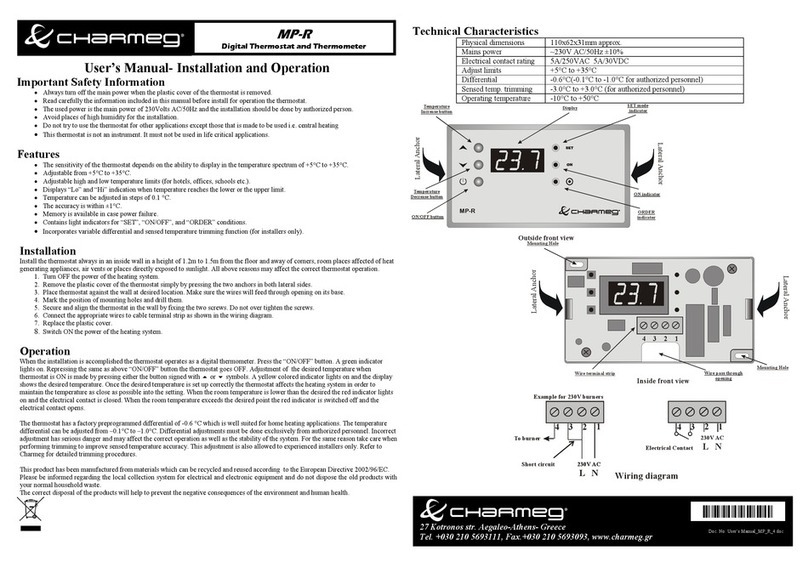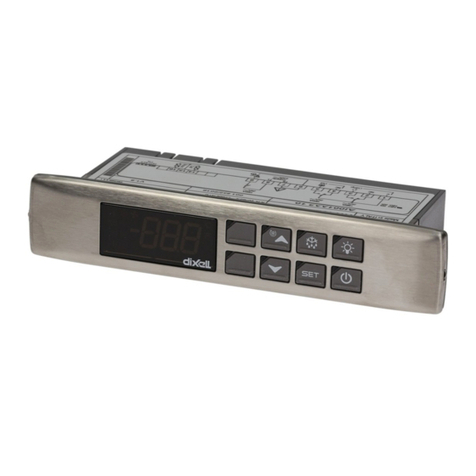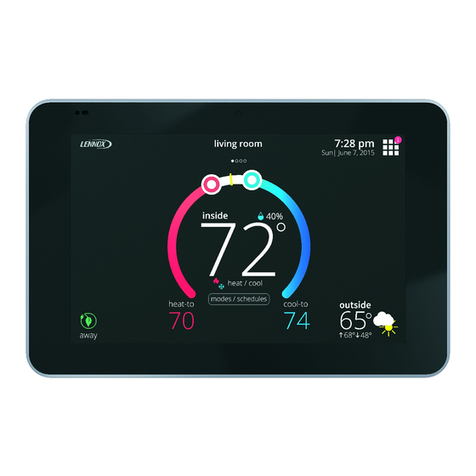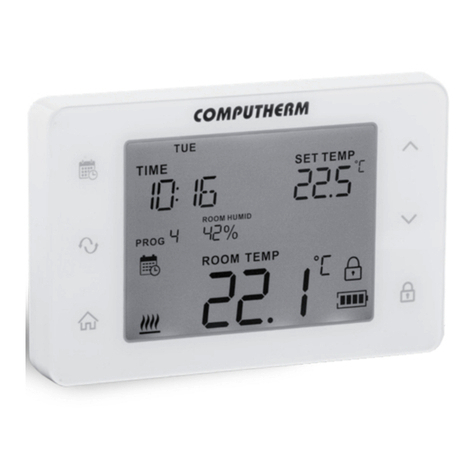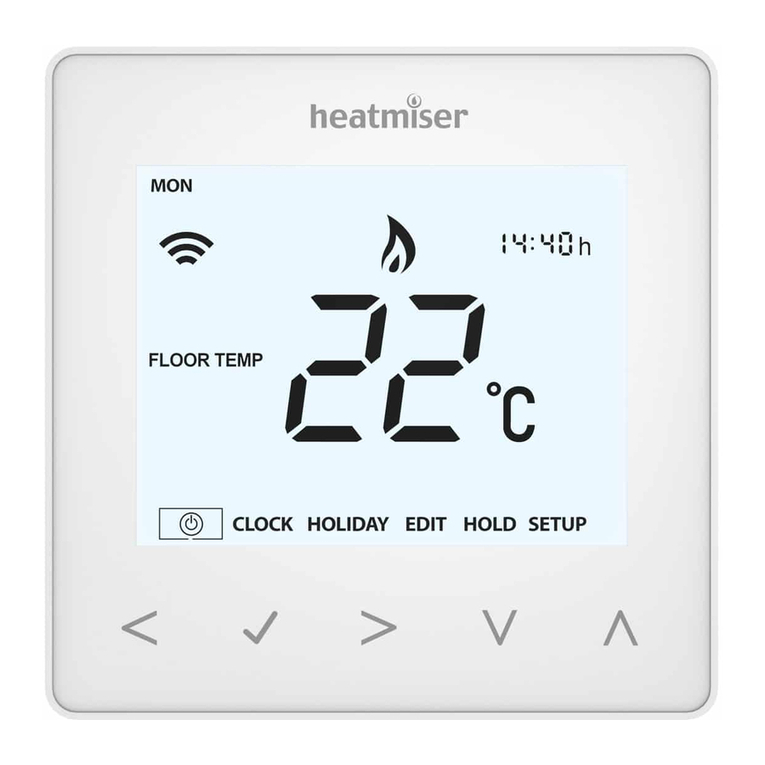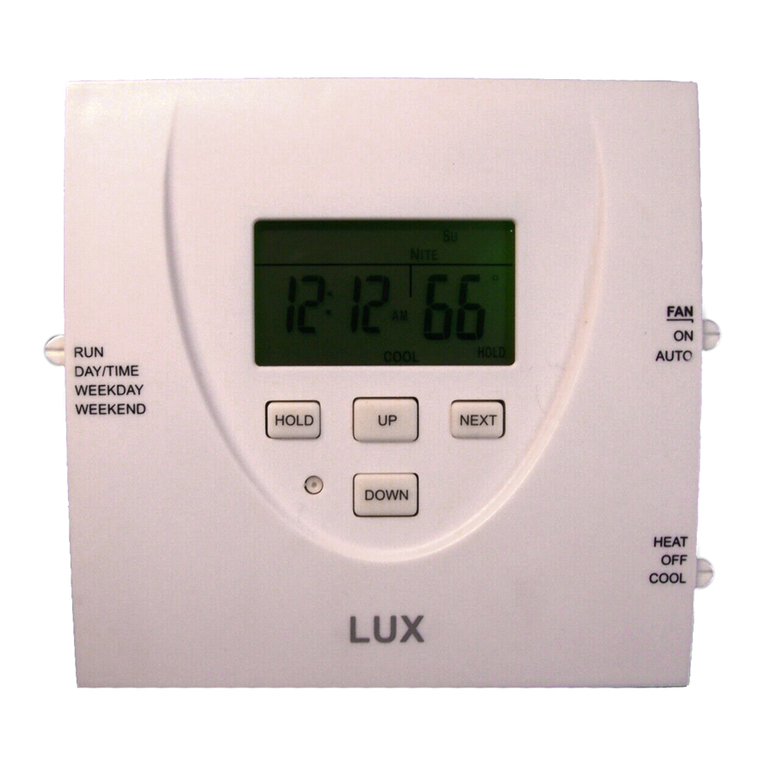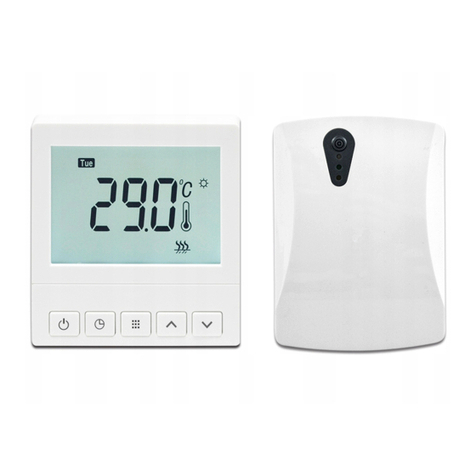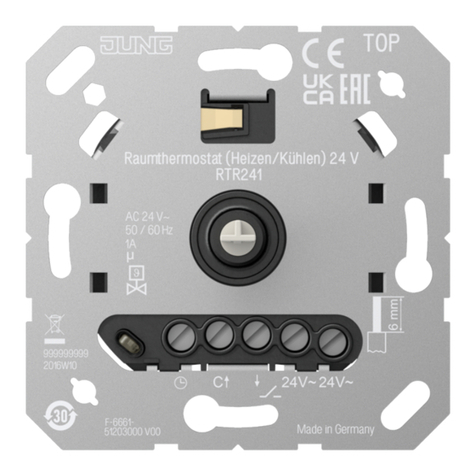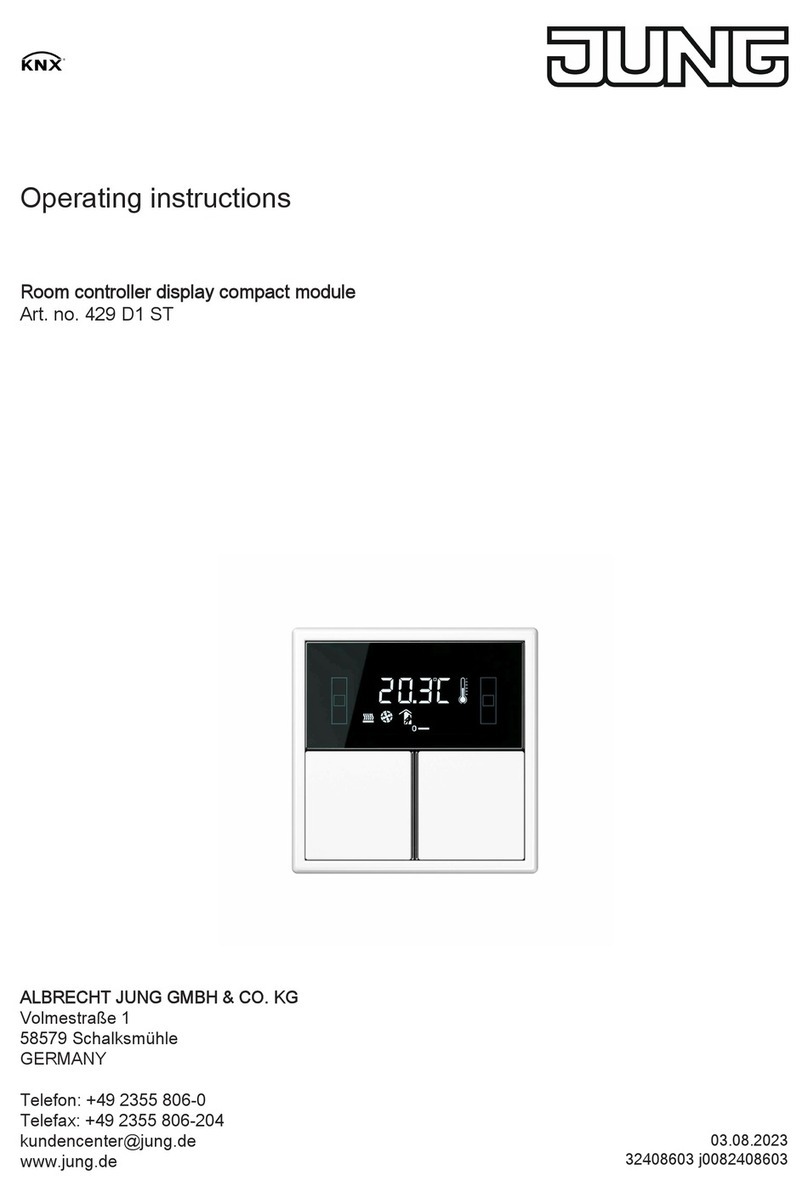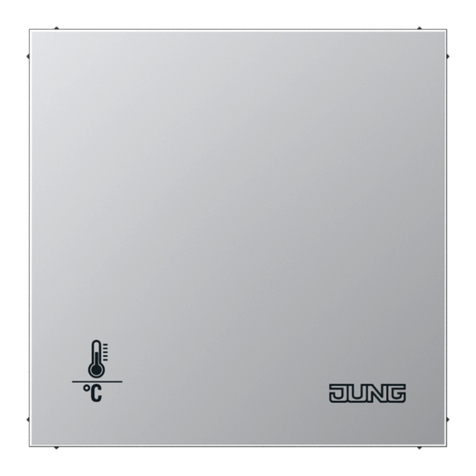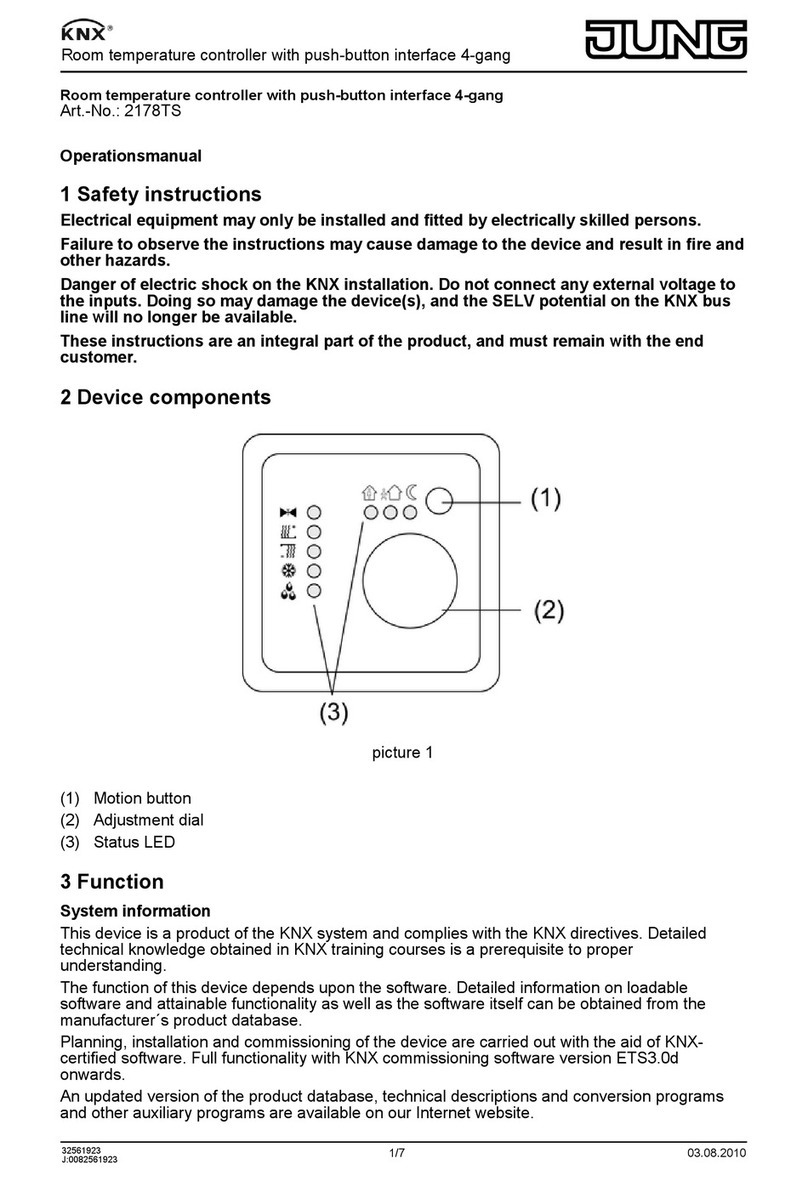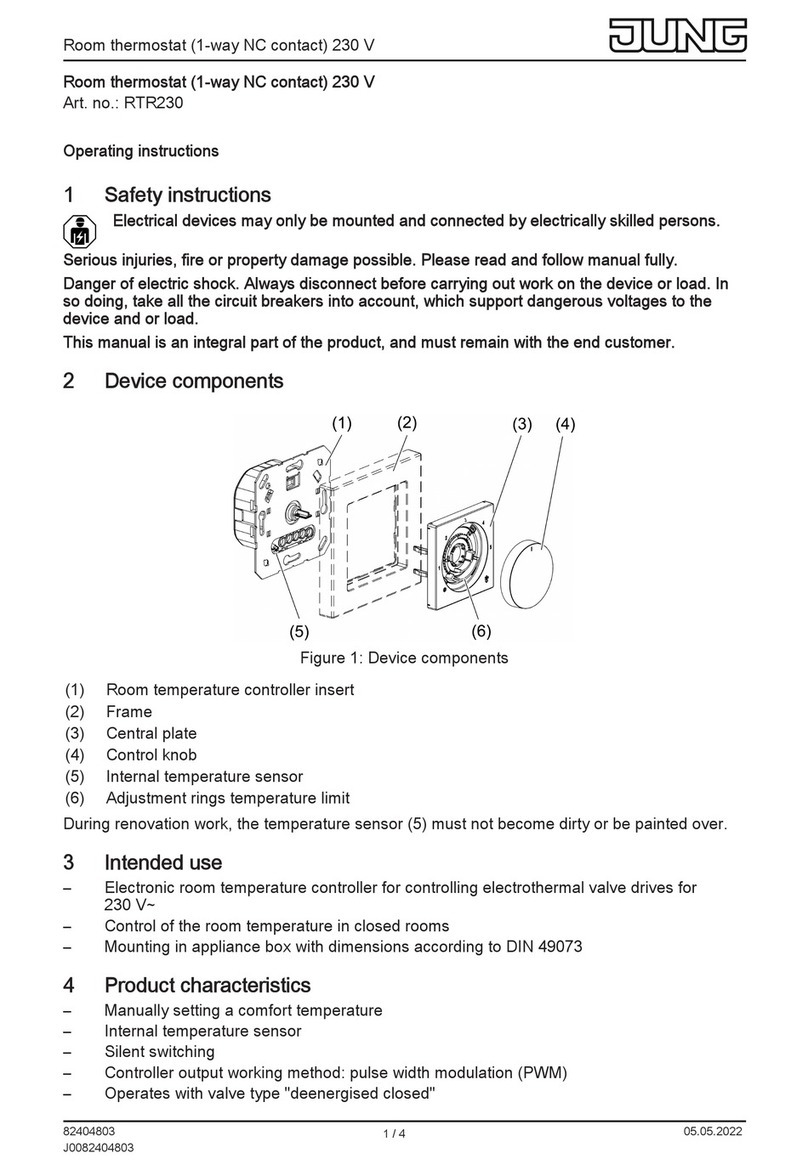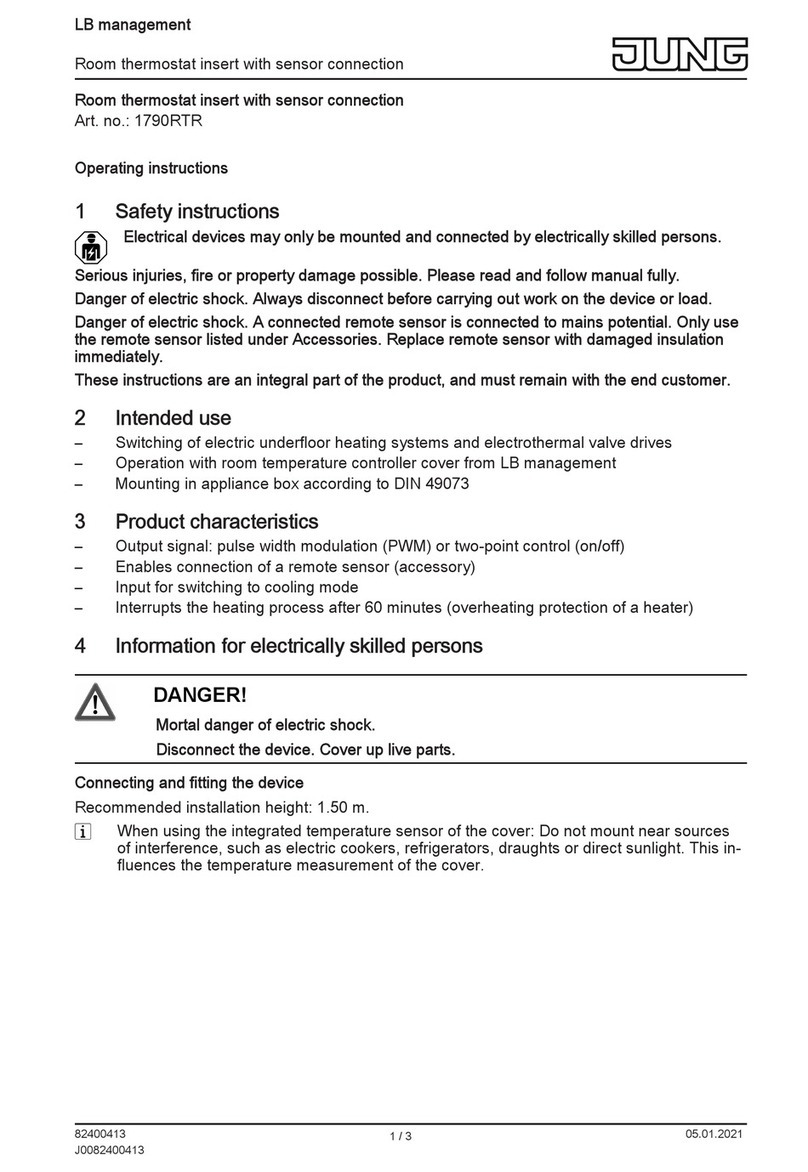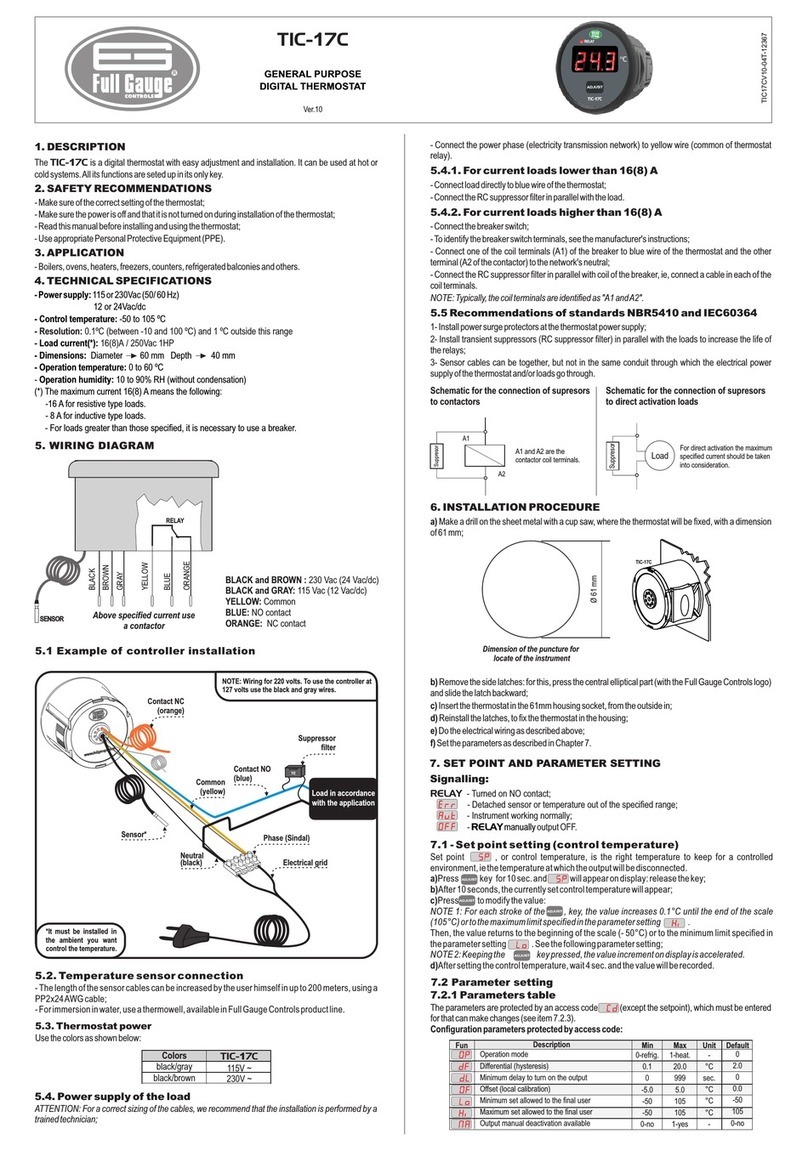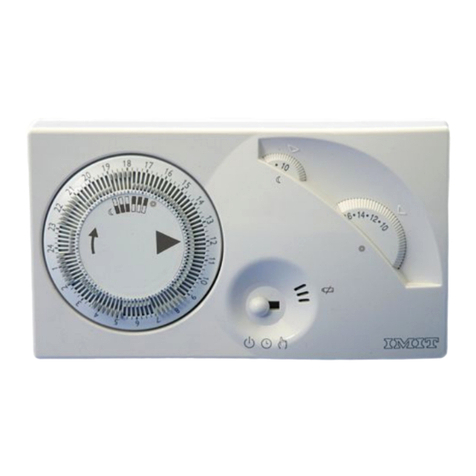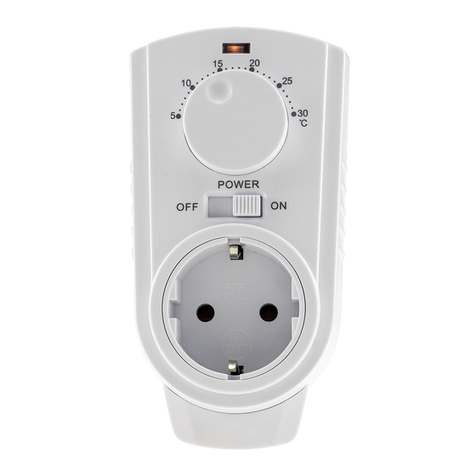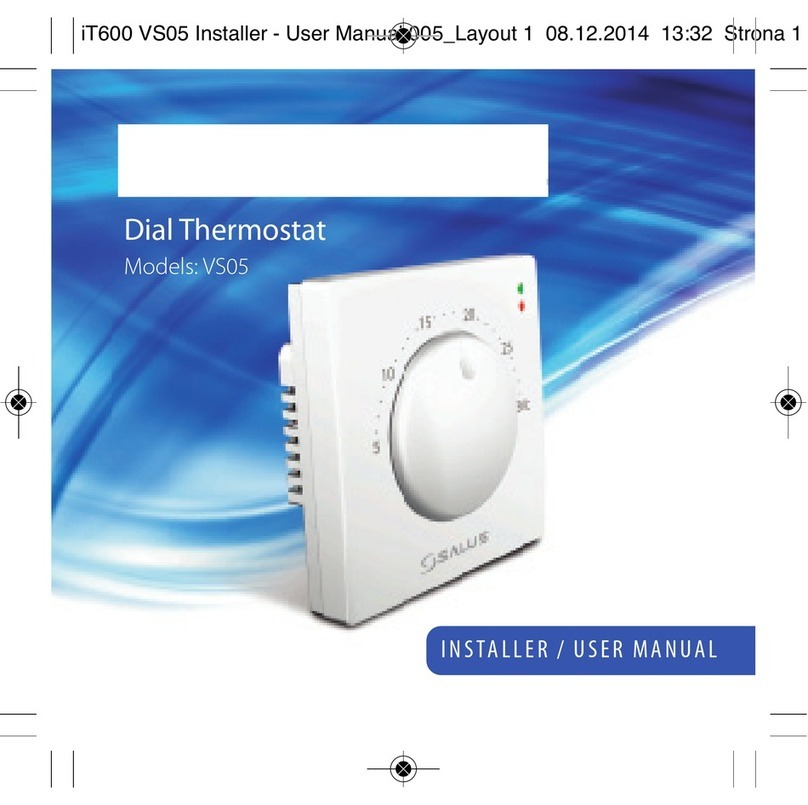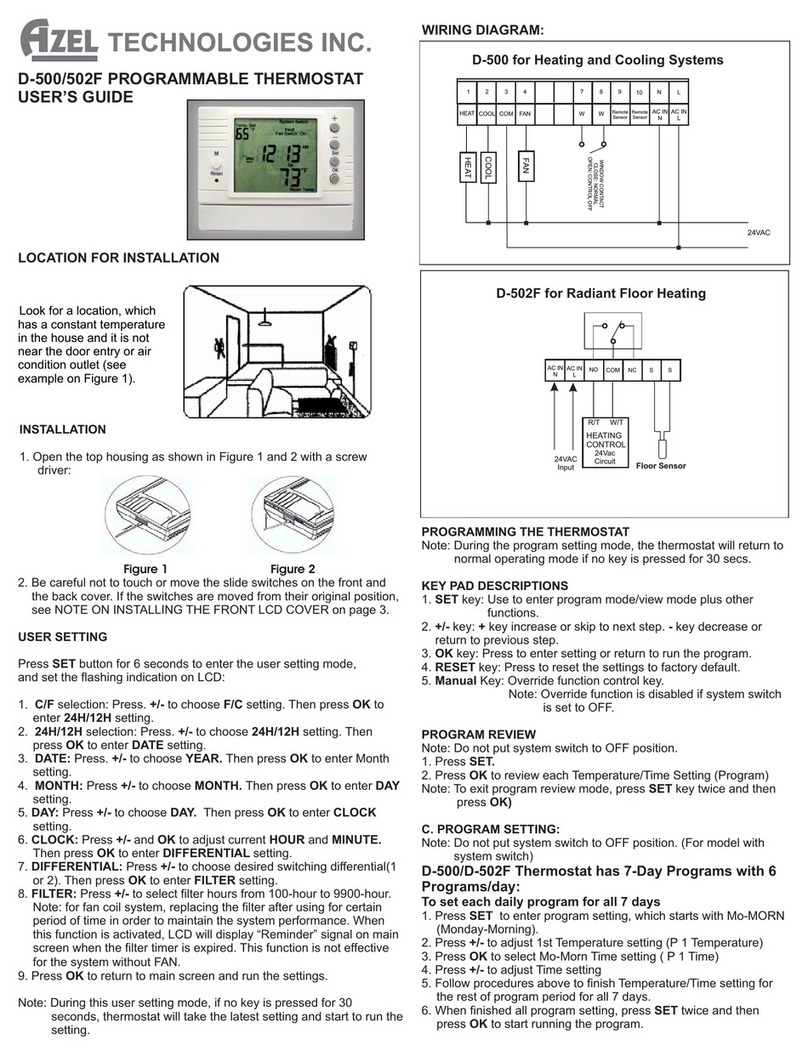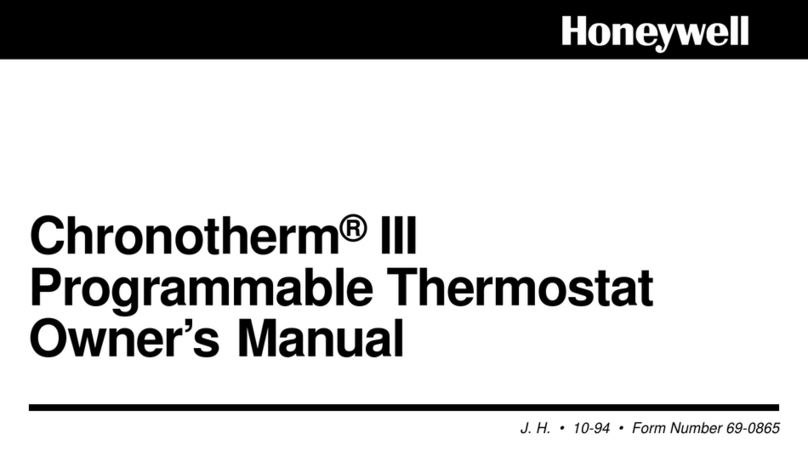
Room thermostat (heating/cooling) 230 V
– Input terminal for activating the cooling mode via central control
– Internal temperature sensor
– Frost protection function
– Silent switching
– Temperature drop detection (adjusting to frost protection temperature when window is
opened)
– Controller output working method: pulse width modulation (PWM) or two-point switchable
– Adaptation to valve type (deenergised opened or deenergised closed, switchable)
– Offset adjustment (correction value for measured temperature)
– Valve protection function (once a week opening and closing of valve)
– Permanent LED operation possible
5 Functional description
ECO operation
In many areas of the building it makes sense for the temperature to be set to a lower ECO tem-
perature at certain times rather than to heat permanently to the comfort temperature. By con-
necting the input terminal Ø to 230 V, the temperature is reduced by 4 °C and the status LED
lights up green. This should be controlled by a central clock. In cooling mode, the wiring of the
input terminal Ø is ignored.
Cooling mode
Modern heat pump systems often also provide the option of cooling rooms. In cooling mode, it is
possible to change the cooling temperature using the control knob.
Switching between heating and cooling mode is done via the control knob or by wiring the input
terminal “C” with 230 V.
Temperature drop detection
In the event of a sharp drop in temperature, e.g. after opening a window, the system regulates
to the frost protection temperature of 5°C for a maximum of 30 minutes. Pressing or turning the
control knob cancels the operation.
Offset
This function allows the adjustment of the position of the control knob so that it corresponds to
the room temperature. Thus, the indication of the temperature via the control button is compar-
able in different rooms. An adaptation of up to +/- 3°C is possible.
Controller adaptation
Depending on the heating system, the control behaviour can be adjusted.
Pulse width modulated control (factory setting): Optimised for electrothermal valve drives (see
Technical data): The output is not permanently actuated, but for a time period (pulse width) that
depends on the difference between setpoint and actual temperature. This method brings the ac-
tual temperature gradually closer to the setpoint temperature.
Two-point control: The output remains switched on until the selected setpoint temperature has
been exceeded by 0.5 °C. The output will not be switched on again until the setpoint value is
undercut by 0.5 °C. Since most heating systems respond very slowly, this type of control can
entail temperature overshooting.
Setting the valve type
Depending on the electrothermal valve drive used, an adaptation to the valve type must be
made. There are valve drives where the valve is opened (deenergised opened) or closed (deen-
ergised closed, factory setting) when no supply voltage is applied.
2 / 8
82404003 04.05.2022
J0082404003
